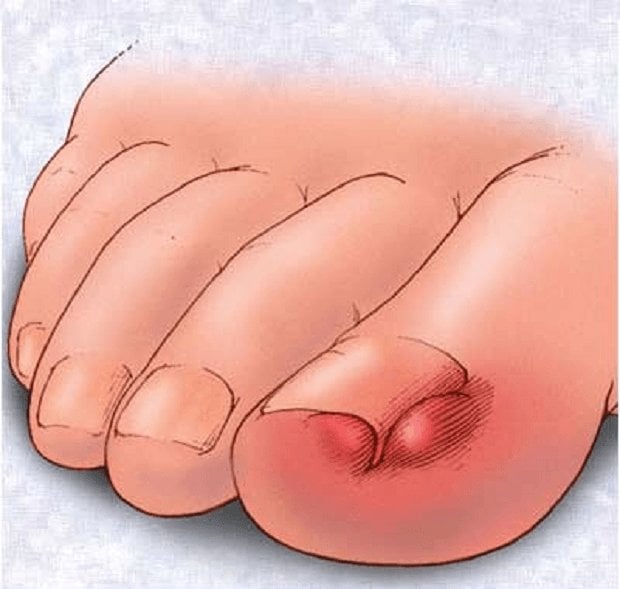In hot and humid Malaysia, there are many reasons to wear sandals, not least to display the myriad of colors of nail polish available for prettying up the toe nails. Nail polish can hide a lot of faults, such as fungal nail infections and nail deformities. This is no excuse to ignore those problems indefinitely, as the problem will come back and bite you. What is an ingrown toe nail? There are many who purport to be able to resolve ingrown toenails and nail deformities; while some may be legitimate, there are many who have no clue what an ingrown toenail actually is. Involuted nails are very commonly mistaken as ingrown toe nails by the general public. An involuted nail may be predisposed to developing into an infected ingrown toenail, but it doesn’t mean it’s permanently one, though it may cause similar discomfort due to the nail deformity. Ingrown toenails occurs when the nail pierces the skin, there may be some bleeding or pus in the area and it is definitely painful.  What causes an ingrown toenail? The most common factor is poor nail cutting either by self-care or a pedicurist. Cutting your nails deep into the side of the nail can lead to spikes of nail being left embedded. These spikes can irritate and cause an inflammatory response in the nail sulci, triggering an ingrown toenail. Individuals with wider nail plates and tight shoes can also develop the condition. People with more active lifestyles and teenagers are also more likely to develop the condition as they sweat more, making the skin more susceptible to injury. What can I do to treat an ingrown toenail? Seek medical advice as soon as possible. While there are individuals who will attempt to treat the ingrown nail themselves, but this may make it worse. Ignoring it will not resolve the problem, and it can develop into ulceration especially in high risk individuals. Podiatrists will remove the offending nail section for you cleanly, with minimal pain and bleeding. Keep the area covered with a sterile dressing until it is healed to prevent cross-contamination. Avoid tight fitting footwear. You may be required to take antibiotics if there is an infection. How do I prevent it from coming back? Some people are prone to recurrent ingrown toenails. If this is the case, your podiatrist may suggest permanent surgical removal of the nail or part of, to resolve this issue. For most people, cutting the nails straight across and lacing footwear properly can significantly reduce the frequency of this condition from reoccurring.
What causes an ingrown toenail? The most common factor is poor nail cutting either by self-care or a pedicurist. Cutting your nails deep into the side of the nail can lead to spikes of nail being left embedded. These spikes can irritate and cause an inflammatory response in the nail sulci, triggering an ingrown toenail. Individuals with wider nail plates and tight shoes can also develop the condition. People with more active lifestyles and teenagers are also more likely to develop the condition as they sweat more, making the skin more susceptible to injury. What can I do to treat an ingrown toenail? Seek medical advice as soon as possible. While there are individuals who will attempt to treat the ingrown nail themselves, but this may make it worse. Ignoring it will not resolve the problem, and it can develop into ulceration especially in high risk individuals. Podiatrists will remove the offending nail section for you cleanly, with minimal pain and bleeding. Keep the area covered with a sterile dressing until it is healed to prevent cross-contamination. Avoid tight fitting footwear. You may be required to take antibiotics if there is an infection. How do I prevent it from coming back? Some people are prone to recurrent ingrown toenails. If this is the case, your podiatrist may suggest permanent surgical removal of the nail or part of, to resolve this issue. For most people, cutting the nails straight across and lacing footwear properly can significantly reduce the frequency of this condition from reoccurring.
This article is contributed by Stella Chai, Podiatrist, IMU Healthcare









